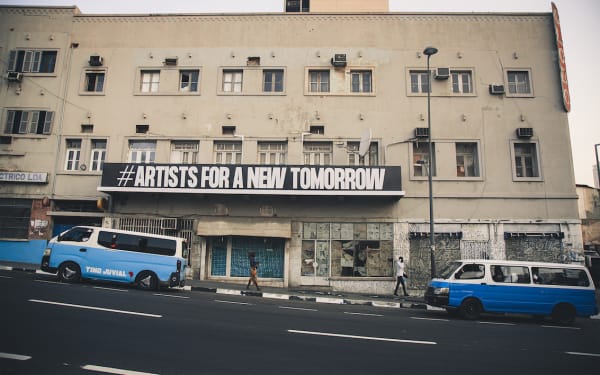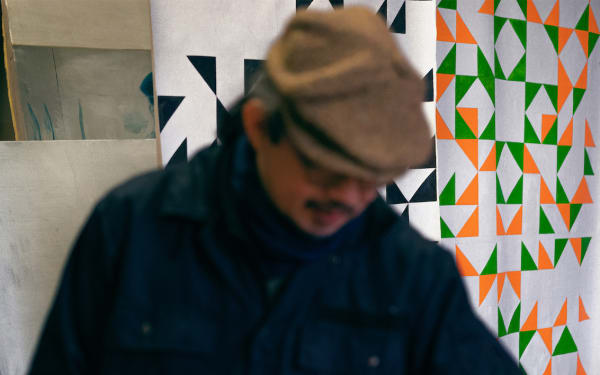What were the motivations behind the launch of the first Art Market Report in 2005?
The European Fine Art Fair (TEFAF) originally commissioned me to write the report. Complex EU regulations governed the art trade, including allowing each member state to define artworks they considered to be national treasures and place restrictions on their cross-border trade. Dealers and auction houses were seeking to protect and promote trade, and anyone that lobbies government needs to have basic industry statistics on how big their market is, how many people it employs, and its economic and social impact. There were no consistent reports like that at the time.
So TEFAF, which was dealer-owned and -run, stepped in to support industry efforts to understand the special characteristics of the art trade and provide important benchmark statistics that the trade itself needed.
Many governments and banks still have a poor understanding of how the market functions or how an art dealer differs from a retail shop. We've shown in these reports that the dealers’ role is much more complex. It includes developing artists throughout their careers, restoring works of art, advising clients, helping to build collections – aspects that make it more akin to a highly skilled service industry.

The art market has increased by around a third since 2009, from $39.5 billion to $67.8 billion. What primary growth factors have driven the markets over this period?
There have been many drivers: increased global diversification of both buyers and sellers; growth in the number and wealth of high-net-worth buyers; the expansion of the contemporary market, both in terms of the artists and the geographical range; as well as the rise in prices being achieved for individual works. The high end has driven a lot of the growth, and this has paralleled the growth in high-net-worth wealth.
The secondary market for living artists has grown enormously since 2005. The postwar and contemporary category was 17% of the auction market in 2000 and it's now 55%. Do you think this is an expression of shifts in collectors’ tastes or something wider?
It is about shifting tastes. If you think back to the 1970s and 1980s, postwar and contemporary art was a tiny, precarious sector frequented only by the most avant-garde dealers and unconventional collectors. In the 1980s, the most valuable sectors of the global art market were Impressionist and Modern, while contemporary was small and perceived as high risk. Even the earliest investment-driven collectors such as the British Rail Pension Fund refused to invest in contemporary or Modern art as they were seen as being too volatile. The postwar and contemporary sector has grown phenomenally to be by far the largest in the market by value and the most popular category for new and established art buyers. It’s also the one category that has the chance to expand, the only one with replenishable supply. Although there’s much more diversity in the sector, the largest aggregate value still resides with the most established artists that have a strong historical footprint.
What trends did you see in this year’s report?
One of the most notable trends was the difference in performance between different value segments and regions – it was a real mixed bag. Some people I spoke to said it had been a real struggle, especially with rising costs and price-conscious buyers. And others had a very strong year. It's a skewed, top-heavy marketplace. While that’s nothing new, the evidence of the high end pulling away was very clear in both the dealer and the auction segments last year.
Why do you think the higher end of the market continues to be a driver of growth when we're seeing diversification elsewhere?
One of the reasons is likely to be the growth and concentration of high-net-worth wealth, and the unequal distribution of wealth; the division between the top 1% and everyone else has continued to grow over the last few years.
I think also that some new buyers that have come into the market have tended to focus on artists and works that are less risky, not trusting their own taste or judgment, and relying more on what they see other successful collectors doing until they find their feet. Some also believe that you can’t buy anything good without spending a lot of money, when in fact it’s a really diverse market in terms of the price points available to collectors.
This pattern of behavior has tended to accentuate the focus on a small number of artists whose prices get driven very high, while others that are equally interesting and talented don't get the same attention. And then, because everyone's buying them, they get reported on more and it becomes a cycle.
Do we have a sense of who’s buying at the very high end in in the Impressionist and Modern sectors?
Some collectors are very focused while others have quite eclectic art collections, often combining a small number of older works with numerous contemporary ones. For some this is simply due to their taste, or it might be a way to diversify risk in their collections.
A few years ago, newer, more risk-averse Chinese buyers would have veered more towards older works that had a clear historic value, a stamp of approval, or a brand-name artist. The highest quality works from these sectors are extremely scarce, so there will never be a shortage of buyers, with many collectors waiting in the wings for the rare opportunity to purchase them.
41% of millennial collectors buy paintings, compared to 53% for boomers. Is there a generational shift where younger buyers are buying more digital or time-based work?
As more art is created digitally, and ways to exhibit and consume it evolve, it is becoming a more important medium for collectors of all ages. I don't think it's going to replace paintings, but it will be a complementary medium and an important element in more collections.
What trends have you seen over the past 20 years in terms of how galleries run their businesses?
The way sales are made has changed considerably. For 20 years or more we’ve tracked the growth of the event-driven market, and alongside that the decline of the retail gallery. However, the pandemic has had some very interesting effects on the infrastructure of sales and we’ve seen galleries adapting to more digitally driven sales and exhibitions.
There is greater collaboration through gallery and trade associations and they have realized that they often have more power to bring about change when speaking with one voice to government. Again, I think the pandemic has motivated some galleries to be a bit more proactive about their businesses, looking at new models of operating rather than simply adapting to whatever comes their way.
The erosion of clearly delineated roles continues as auction houses increase their involvement in the primary market, dealers collaborate to sell artists' estates, and disintermediation: artists selling directly through auction houses or NFT platforms. How will this impact the market going forward? And will it complicate the reporting that you do?
There has been quite a lot of blurring in the boundaries between these different parts of the market. The issue of disintermediation is complex, and increasingly more sales are happening outside of the traditional art market of auction houses and dealers. Some artists are selling more themselves, and along with other private sales between collectors and other parties, this is an important and unmeasured part of the market. Without including this aspect of sales, we’re underestimating the actual value of art being traded in any given year.
What future directions will your research take for the Art Market Report?
My focus will continue to be on providing consistent benchmark statistics for the art trade of their sales and key trends each year. But we’re always looking for new and different sources of data, aside from sales, which is something I’d like to explore more. Larger markets tend to get more focus, but it’s always fascinating to look in more detail at different regions and particular sectors.
Outside the traditional network of dealers and auction houses, there is a whole range of important research looking at how artists are building their careers, which was where my research started out about 20 years ago, and which would be interesting to return to. Building more cross-disciplinary approaches is also key to me, including collaborations with sociologists, lawyers, historians and others to explore the market from different perspectives.
Explore the 2023 edition of The Art Market, a report by Art Basel and UBS, here.
Dr. Clare McAndrew, founder of Art Economics, is a cultural economist who specializes in the arts, antiques, and collectibles markets.
Dr. Jeni Fulton is Art Basel's Head of Editorial.
Published on April 19, 2023.
Caption for full-bleed images: 1. Artwork detail in A Gentil Carioca’s booth at Paris+ par Art Basel 2022. A dark filter was applied over the image for readability. 2. Detail of a work by Roméo Mivekannin presented by Galerie Cécile Fakhoury at Paris+ par Art Basel 2022. 3. Detail of a work by Carlos Cruz-Diez presented by Sicardi Ayers Bacino at Art Basel Miami Beach 2022. 4. Detail of a work by Thomas Schütte presented by Peter Freeman, Inc. at Art Basel Miami Beach 2022. 5. Detail of a work by Ruth Asawa presented by David Zwirner at Paris+ par Art Basel 2022.

